When I plan a ballpark trip, one of the things on my to-do list is to see what other ballparks are in the area.
Over the years, I’ve visited NCAA parks, collegiate summer league parks, and various other parks — typically, using these outings to help kill some time before an evening ballgame.
A ballpark that belongs firmly to the “other” list is Cooper Stadium, which I was able to check out during my recent weekend in Columbus.
Cooper Stadium opened in 1931 and hosted baseball through 2008. Many different franchises called it home, but it was best known as the longtime (1977 to 2008) home of the Columbus Clippers. Following their tenure at Cooper, the Clippers moved into Huntington Park, where they still play. Cooper Stadium also hosted a pair of Negro Leagues teams, the Blue Birds and the Elite Giants, in the 1930s, and even had short stints playing host to professional football and soccer.
Most of my old ballpark exploration over the years has been solo, but I was happy to have some company on this visit, in the form of my friends Mark and Tom. We were in town for a couple of games at Huntington Park, and spending some time at Cooper was on our list of other activities to enjoy.
Leading up to the visit, it was unclear what type of access we’d get to the old stadium. Lots of abandoned/partially demolished buildings are fenced off, but a little online research about Cooper suggested we might be able to get onto the field, if not into the grandstand area. I was excited when we were able to pull straight into the stadium’s parking lot — an old sheet of asphalt that was covered with weeds sprouting up through cracks and miles of tire skid marks left behind after late-night driving shenanigans.
As soon as we parked and stepped out of the vehicle, we each went in three different directions. (At the time, I recall thinking this would’ve been a funny visual from overhead: A vehicle stopping, three doors opening, and three occupants heading their separate ways as though they’d just had a terrible quarrel.) Tom made a beeline back toward West Mound Street to get some wide-angle shots of the ballpark. Mark immediately went toward the infield to see if it was suitable for a game of catch. And I walked to the end of the half-demolished grandstand and snapped this picture:
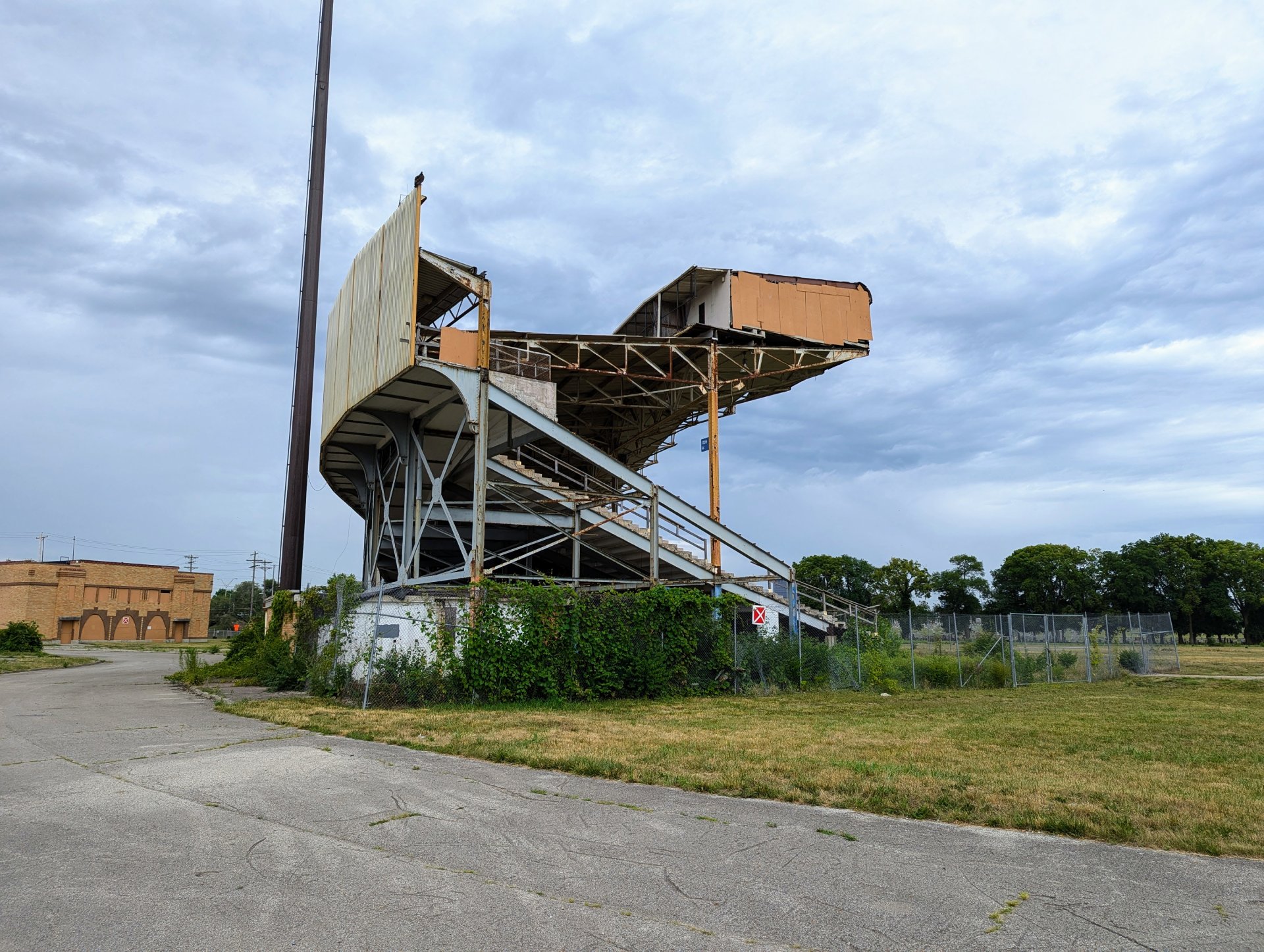
Later inspections revealed this was the third base grandstand, which is all that currently remains of the stadium structure itself. The open end that is visible above would’ve joined with the grandstand that was directly behind home plate. Honestly, I was in awe as I stood and took in the scene. I’ve visited a lot of stadiums and even walked where old stadiums once stood, but I’d never seen such a facility in a partially demolished state.
Next, I moved toward the back side of the grandstand, which currently looks like this:
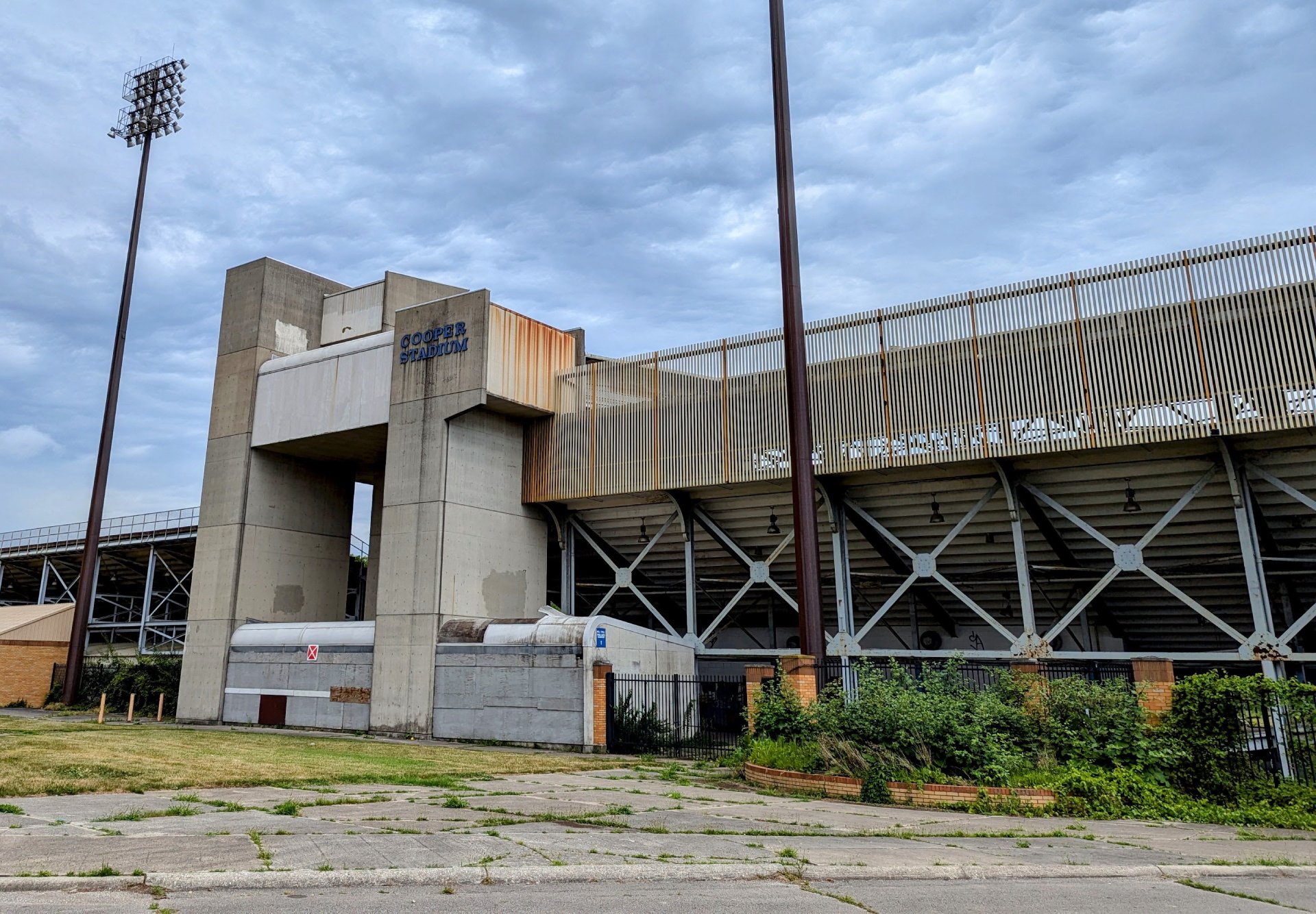
It’s not hard to at least get a partial sense of how this structure might’ve looked in its later years. I imagine there would’ve been player banners or other signage on display in this area. In 2008, its final season, Cooper Stadium hosted a Clippers squad that went 68-74. The roster featured all sorts of players who had big league success. Pitcher Tyler Clippard, an eventual two-time MLB All-Star, led the ’08 Clippers with 27 starts at the age of just 23. Future MLB All-Star pitcher Marco Estrada was also a member of that team. Four-time MLB All-Star Paul LoDuca was an ’08 Clipper at the tail end of his career, while Gold Glove Award winner and two-time Silver Slugger Ryan Zimmerman spent a few games with the team on a rehab stint.
If you go back a few more years, of course, you’ll realize that many future hall of famers suited up at Cooper. Derek Jeter, Andy Pettite, Jorge Posada, and Mariano Rivera — later known as the Yankees “Core Four” — were all Clippers teammates in the mid-1990s. The Clippers were affiliated with the Yankees from 1979 to 2006, so lots of future Bronx Bombers spent time at Cooper Stadium.
I knew Mark was eager to play catch, but I wanted to check out a couple more exterior sights before I caught up with him on the Cooper Stadium infield. My next stop was a standalone brick structure situated between the back of the grandstand and the street. A sign identified this building as the “business and ticket office,” and it didn’t take a lot of imagination to picture fans buying their paper tickets here — likely by walking through the arches (which are now boarded up) at the front of the building — before moving toward the concourse and their seats:
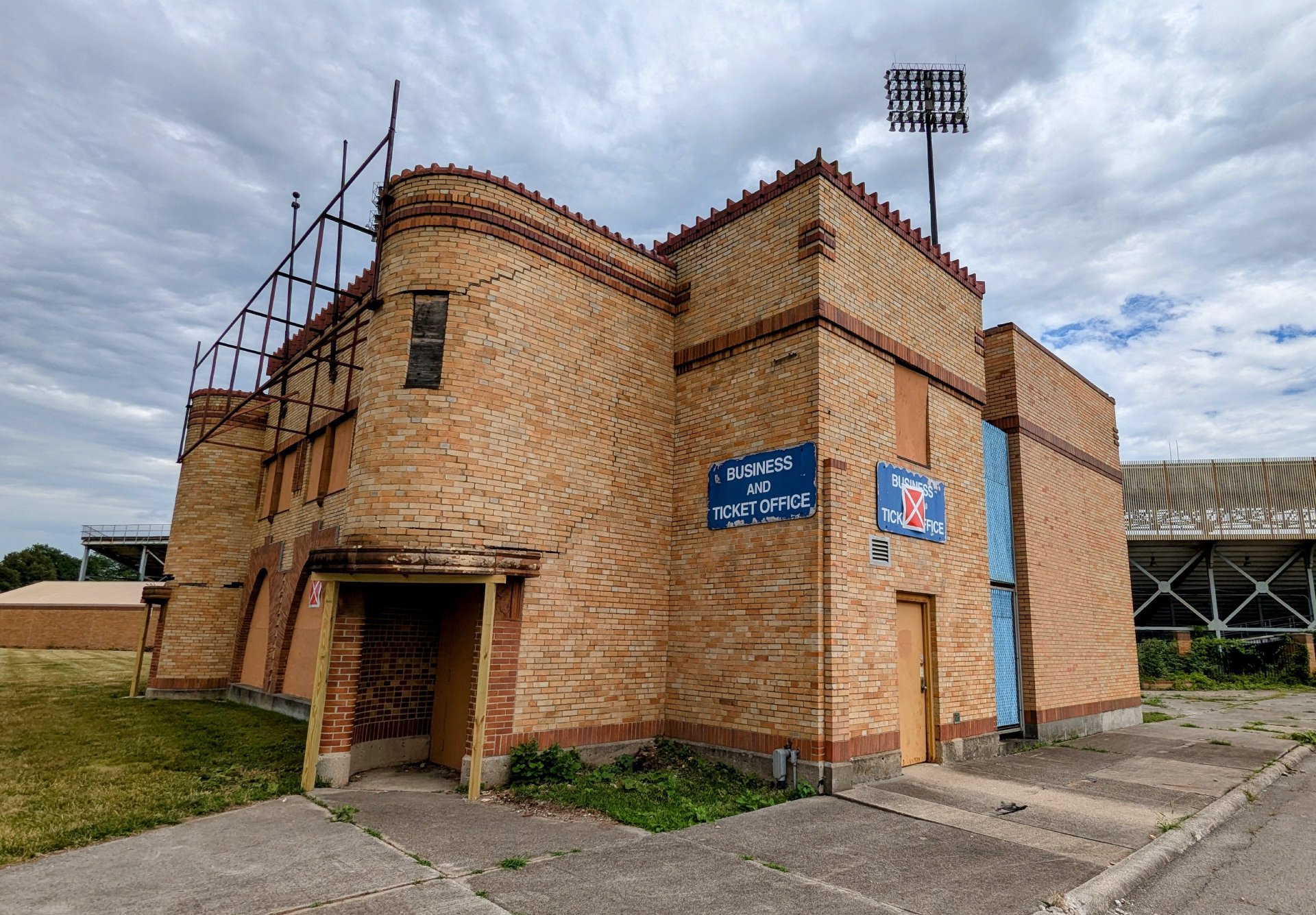
I spent a couple of minutes checking out this building before backtracking to meet up with Tom and snap a picture of what ended up being one of my favorite shots from the visit:
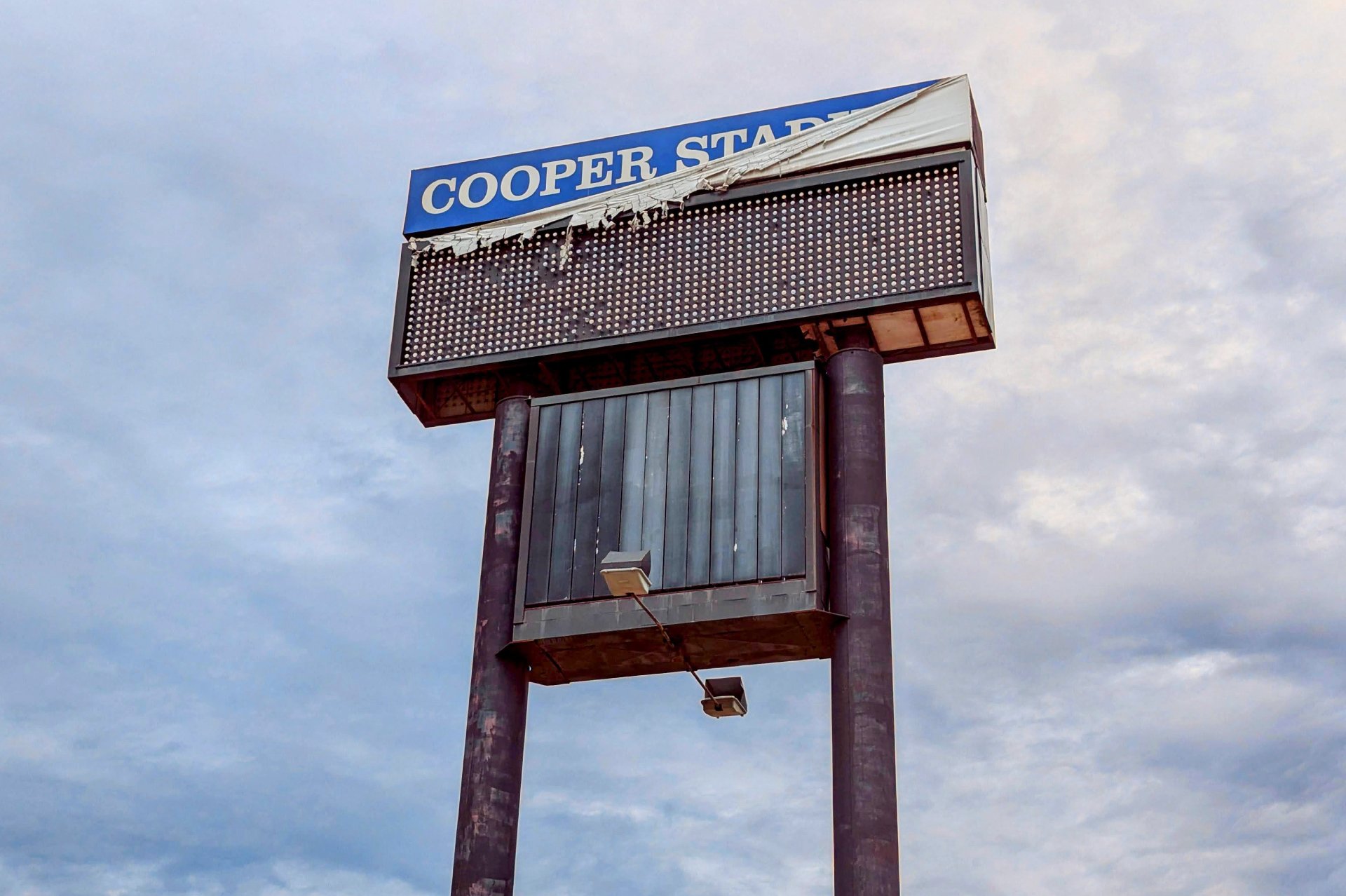
I think it’s cool how the Cooper Stadium wording appears to have once been covered with a tarp, but has since become visible again. The hundreds of tiny lightbulbs below the stadium’s name would have flashed messages to the community — “Game Tonight,” for example. And the Trivision panel below — the billboard portion that rotates to reveal different signs — undoubtedly showed advertisers. It’s fun to think about what brands might have advertised here. The long-since burnt-out floodlights and rusty posts perfectly match the sign’s overall look.
Next, Tom and I made our way toward the infield, where I was pleased and a little surprised to find that we could walk right across the warning track and onto the now-overgrown — and absolutely filled with gopher holes — field of play. With baseball glove in hand, I paused for a moment to take this shot of the grandstand from a new angle:
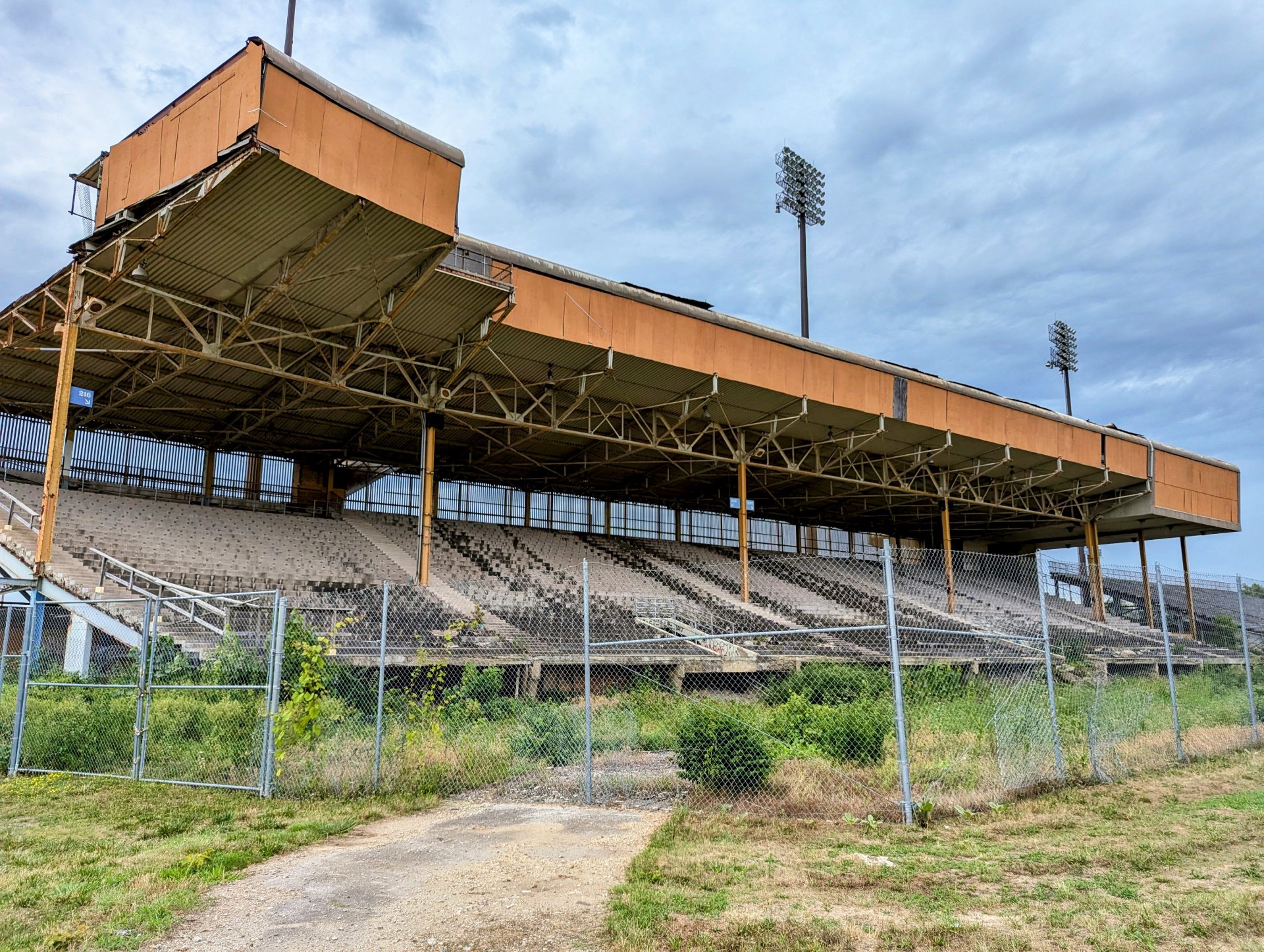
I believe the structure that juts out from the roof is the press box. Are those boarded-up suites along the upper edge of the structure? I think so. Despite being abandoned for a decade and a half, and having the seats removed, the grandstand itself had some interesting things to see. Some of the signs that directed fans to their seating sections were still there, as were some lights and speakers. Design-wise, I liked how the roof sits so high above the seats and how the space behind the upper row was open. Both features would’ve helped to give the grandstand a relatively bright and spacious feeling, rather than one that was dark and cramped.
With our game of catch on deck, I took a moment to grab a quick selfie:
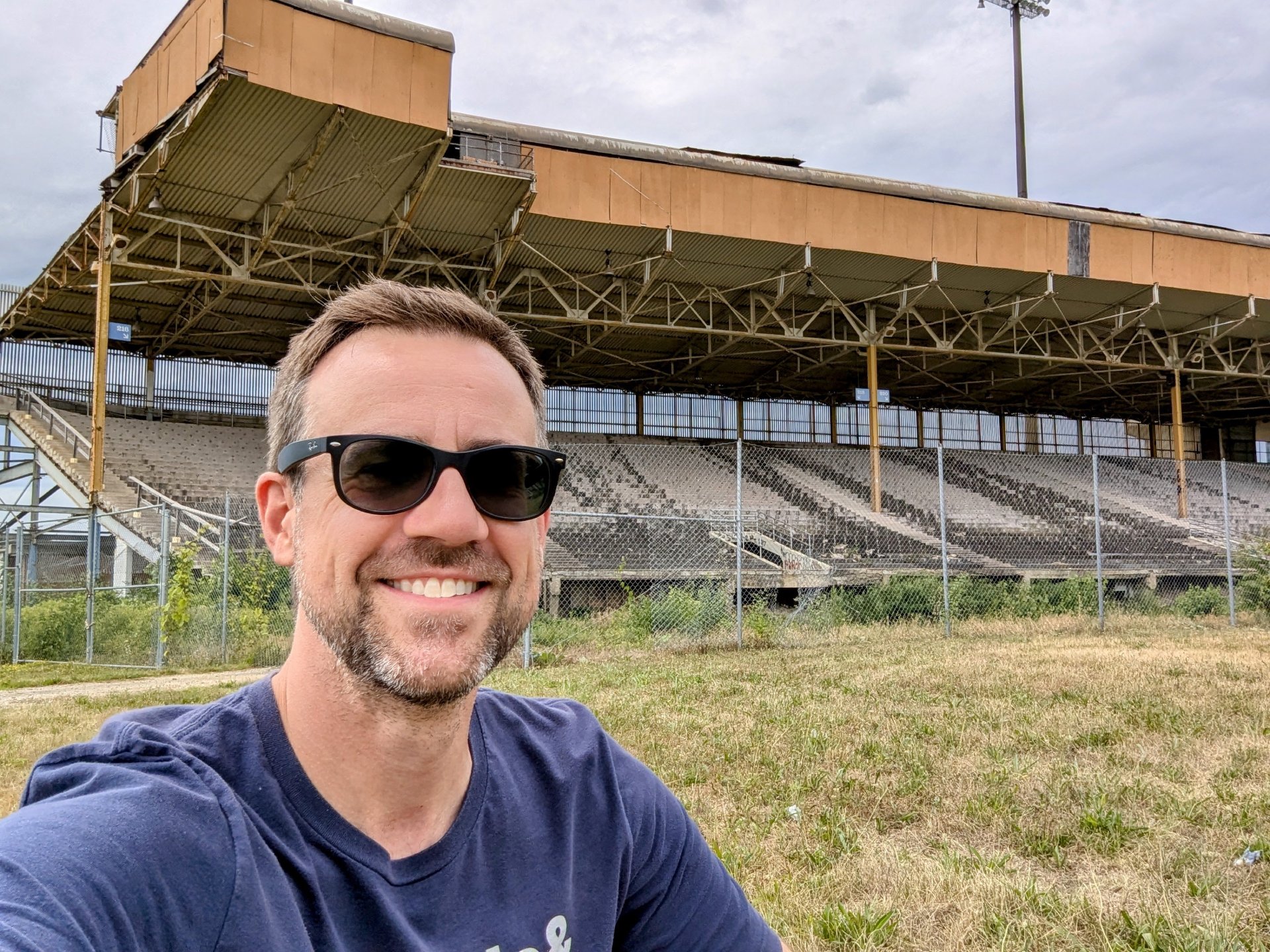
We had a good three-way game of catch for perhaps 15 or 20 minutes, and then I got into a catcher’s crouch and caught Mark’s knuckleballs for a while. Risking life and limb for the good readers of this blog, I managed to take the following photo as one of the knucklers was heading my way:
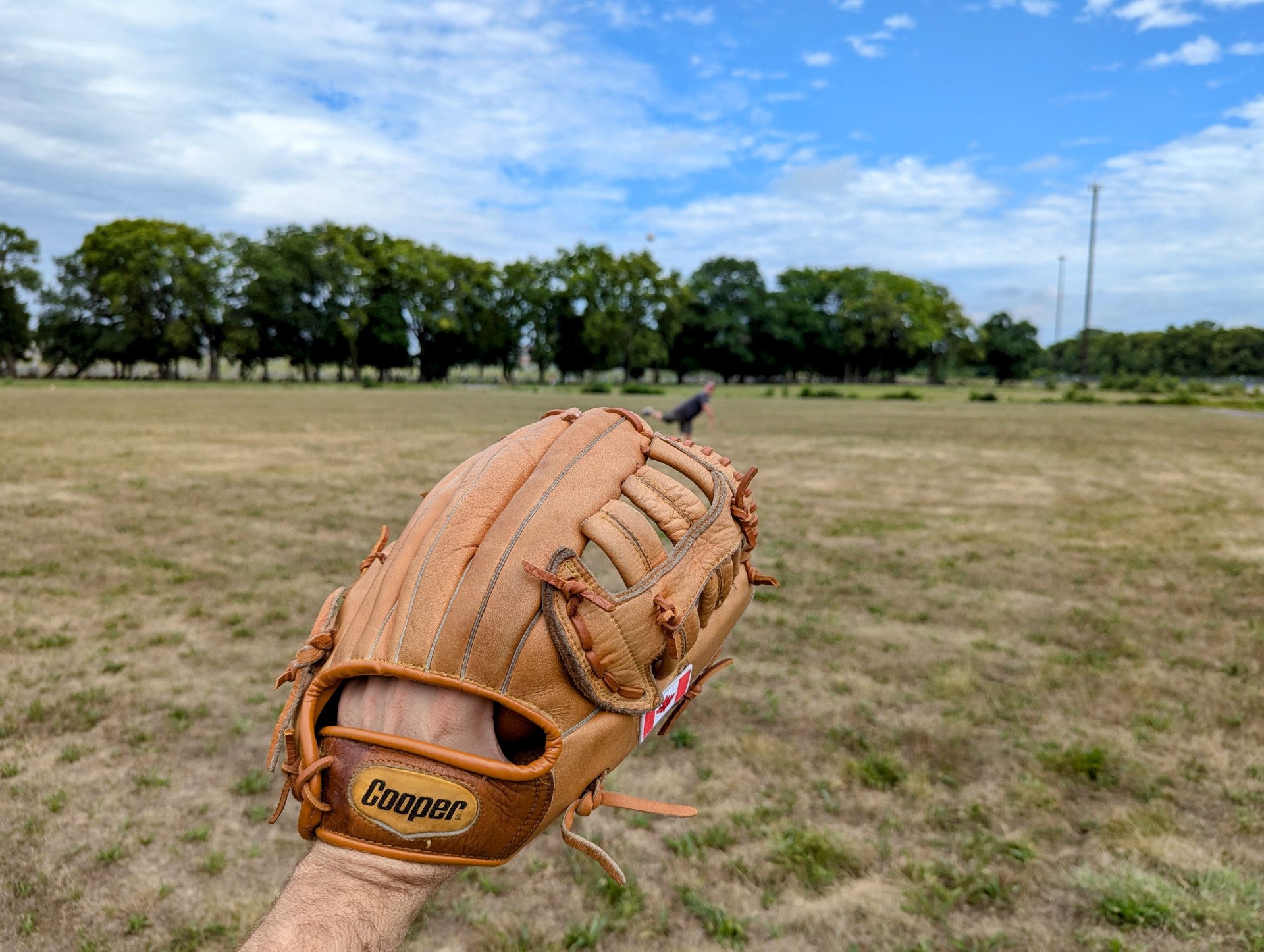
After our game of catch was done, we spent a few more minutes taking in the scene around Cooper Stadium. From the infield, I took this shot down the third base line, which shows the end of the grandstand and a set of standalone bleachers, which were common in many older MiLB parks:
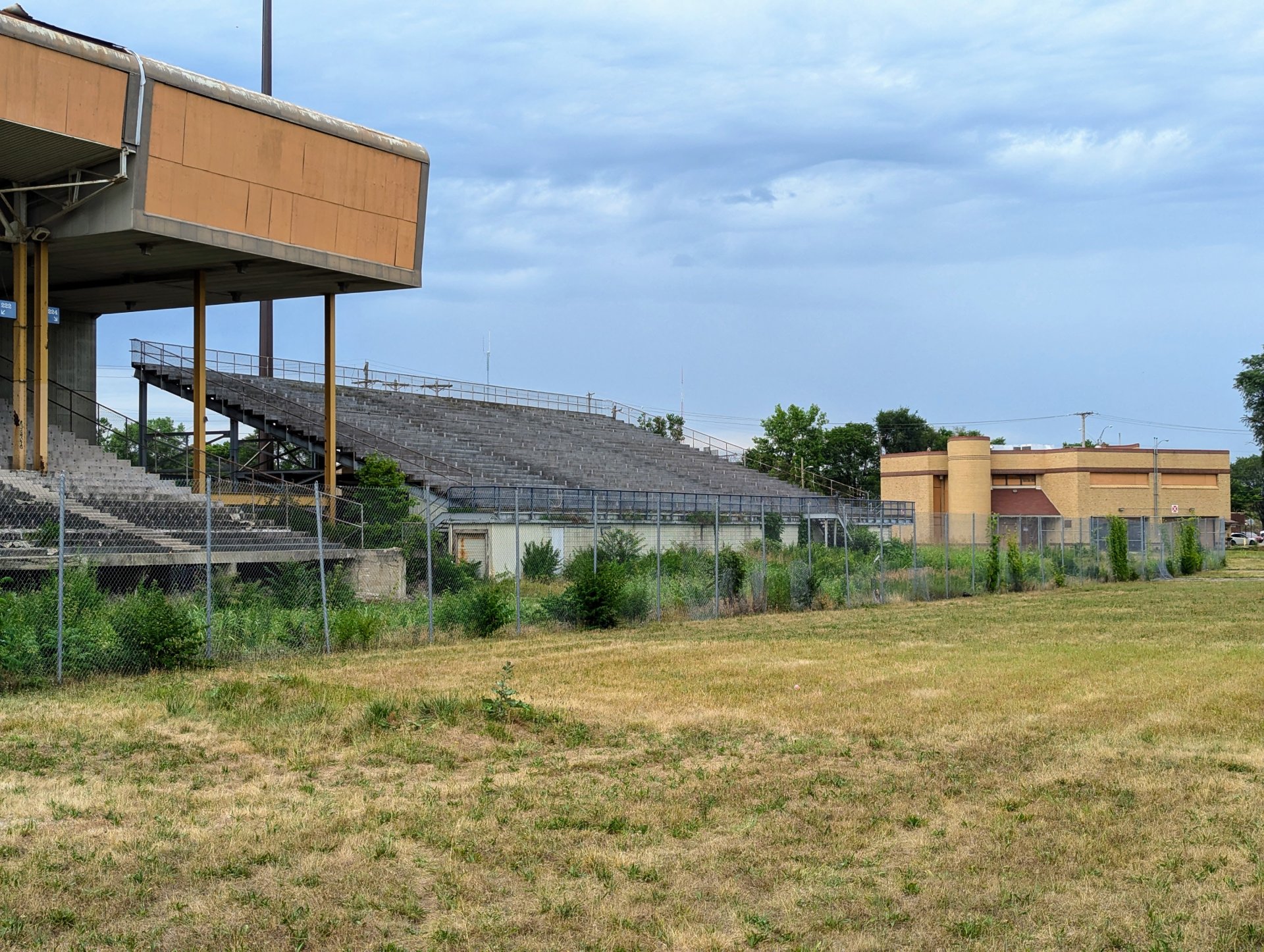
I also took a shot aiming toward where the outfield fence once stood. Mount Calvary Cemetery, which has more than 40,000 interments and dates back to the late 1800s, is visible beyond the Cooper Stadium property:
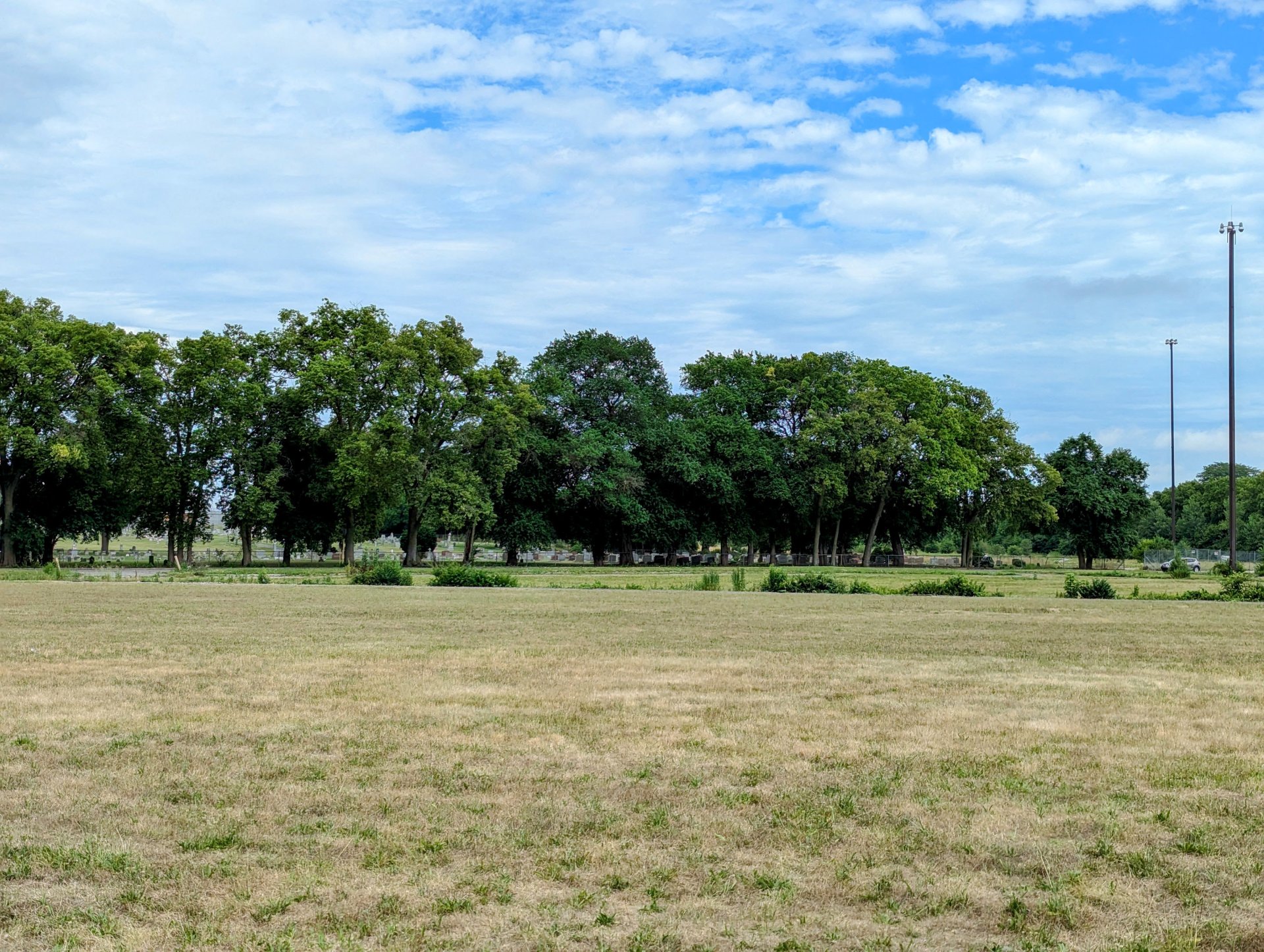
I also took a slightly closer look at the remaining grandstand, which you can see in the following photo. The overgrown vegetation makes it hard to see, but that’s the dugout beneath the stands:
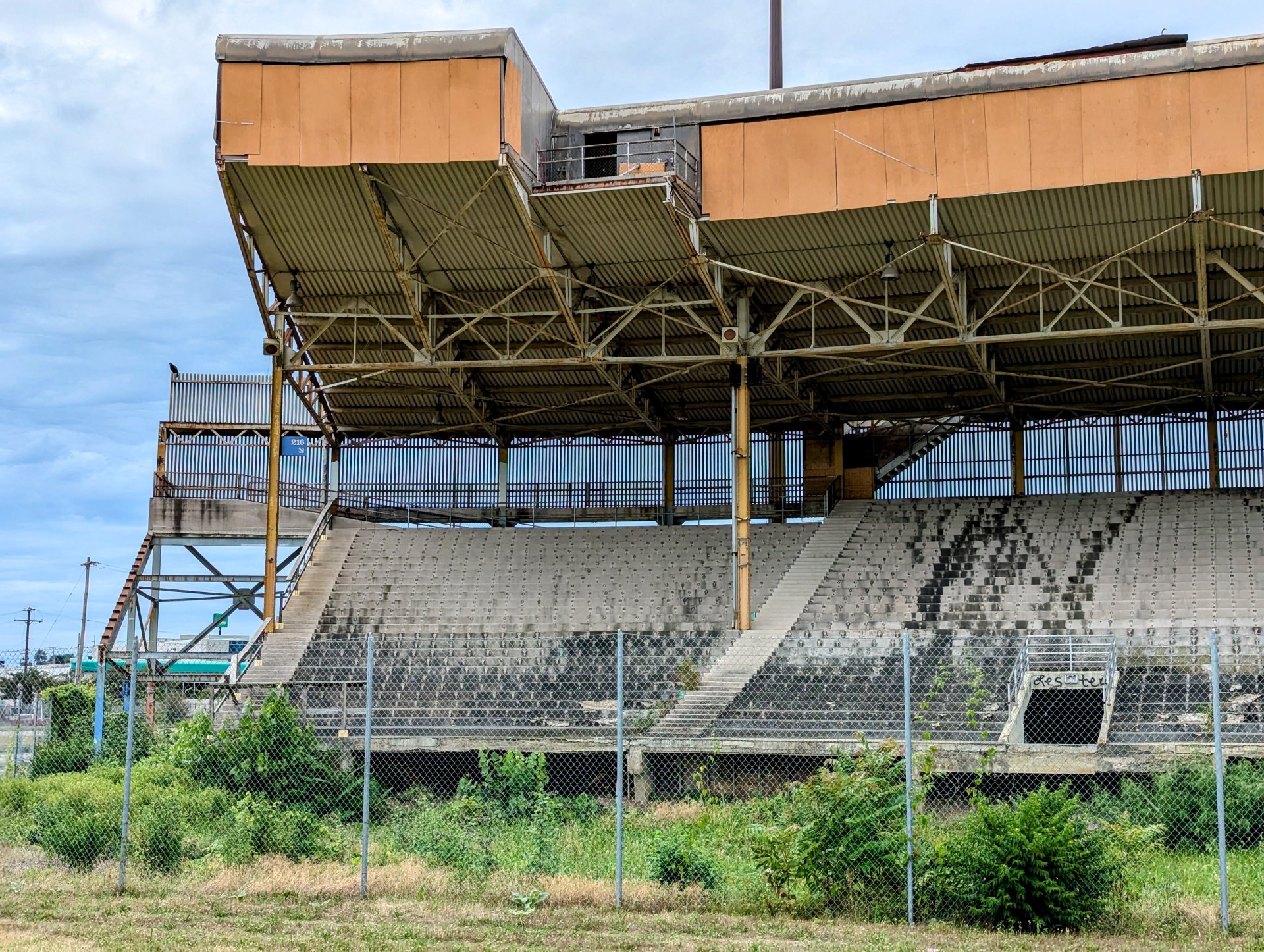
The dugout — and the entire grandstand, for that matter — would’ve been fun to explore if it weren’t for the fence. As we walked back toward the parking lot, I paused to take this final shot through the chain-link fence:
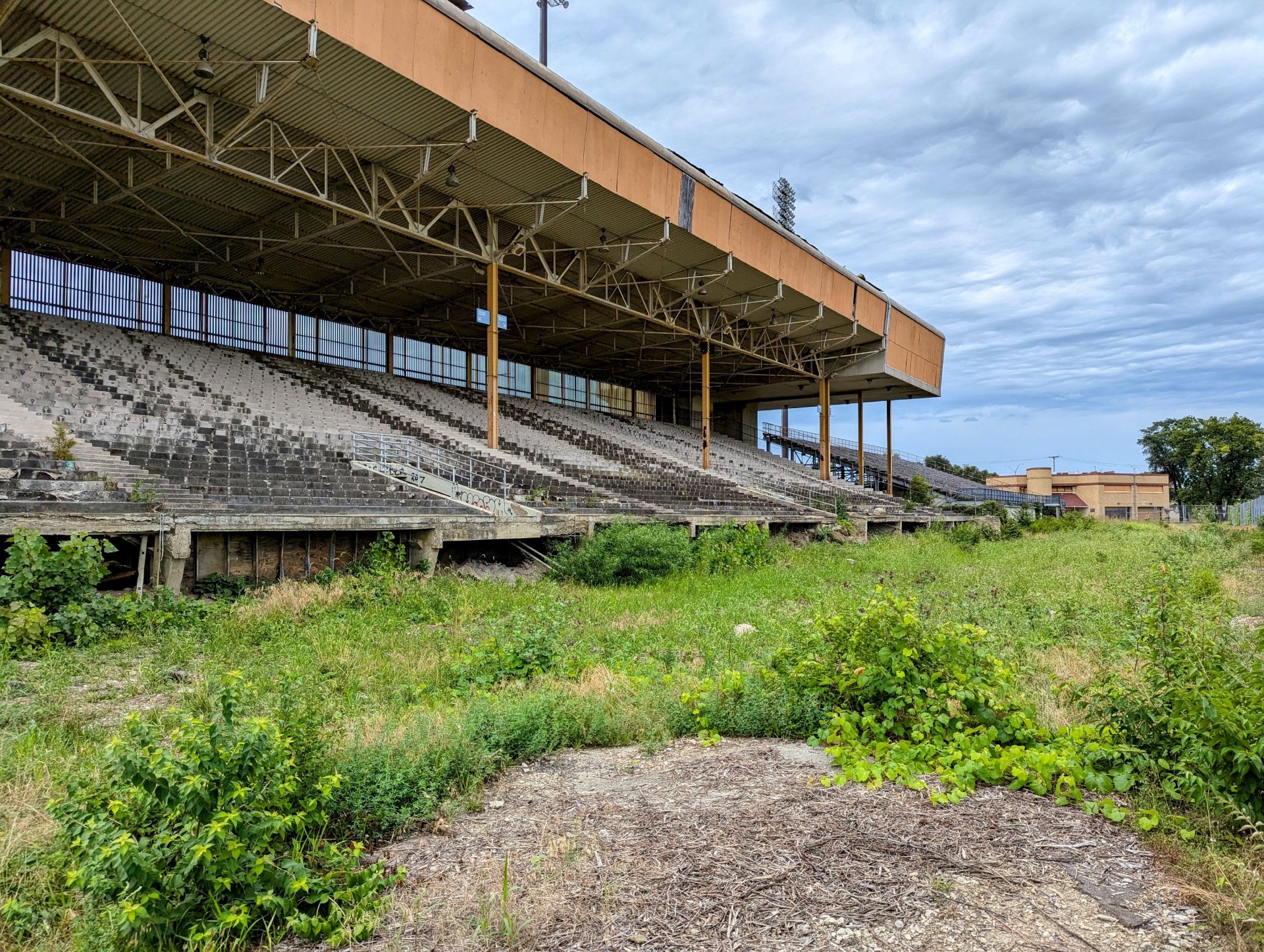
Afterward, I turned to see Mark crouched down, wearing a mischievous look, gripping the chain link, and drawing my attention to a spot where one could easily pry up the fence and slip into the restricted area. While it was tempting to get a better look at the grandstand, it was also trespassing — and we were a little unnerved about who or what we might encounter. Honestly, we didn’t consider the idea with any level of seriousness, but I’d be lying if I didn’t at least daydream about the idea of gaining better access to the abandoned stadium.
So, what’s the future look like for Cooper Stadium? There are all sorts of rumors floating around, but none of them is too promising for the old facility. A report from June suggests that the remaining grandstand could soon be demolished, although notes that the demolition project comes with a hefty price tag of roughly $250,000. Over the years, there have been all sorts of ideas on how to use the 47-acre plot of land, which unfortunately doesn’t seem to be in the nicest area of the city. Turning the land into a racetrack was a popular idea for a while, but it didn’t materialize. In recent years, proposals of mixed-use space that includes apartments and retail have made headlines and seemed to gain traction, but nothing is yet, pardon the pun, concrete.
Are you thinking about visiting Columbus to watch a game at Huntington Park? You might want to consider dropping past Cooper Stadium — situated less than four miles away — while there’s still something for you to see. It’s unclear just how soon the next stage of demolition, which will radically transform the look of the property and all but eliminate traces of the old ballpark, will take place.
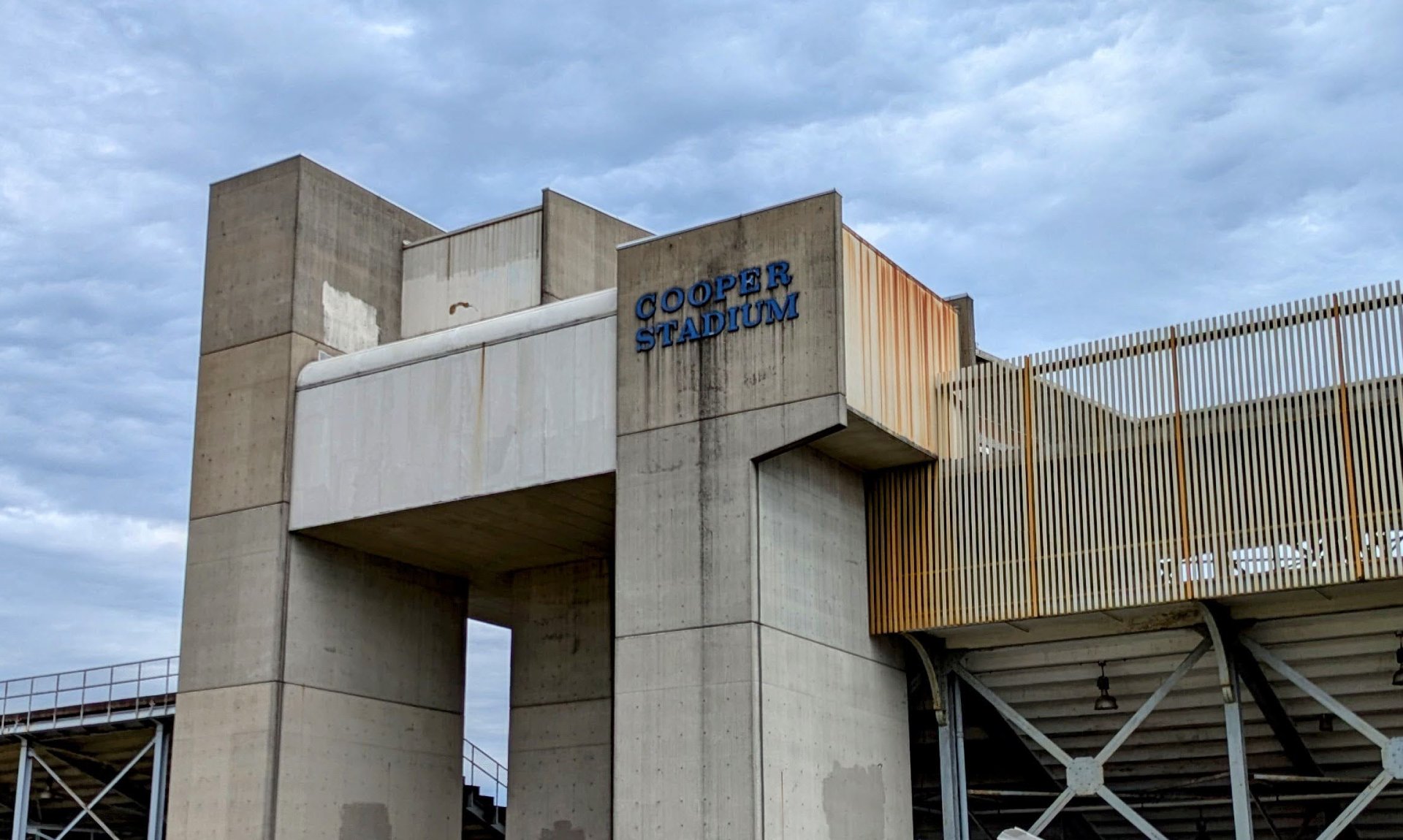
You must be logged in to post a comment.